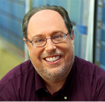-
News
- FPL2012 Awards
- FPL2012 Presentations
- Impressions and Pictures
- Technically co-sponsored by


- FPL Keynote Speakers:
Contact
- FPL2012 Awards
The idea of dynamically reconfiguring programmable devices fascinated Turing in the 1930′s. In the early 90′s, DeHon pioneered dynamic reconfiguration within FPGAs, but neither his nor numerous subsequent efforts, both academic and industrial, resulted in a useful and usable product. Over the last several years, we have significantly advanced the hardware, architecture, and software for rapidly reconfiguring, programmable logic: going beyond the FPGA using a body of technology we call Spacetime. Spacetime represents two spatial dimensions and one time dimension as a unified 3D framework: a powerful simplification that has enabled us to deliver in production a new category of programmable devices (3PLDs) that are far denser, faster, and more capable than FPGAs yet still accompanied by software that automatically maps traditional RTL onto these exotic fabrics. In developing Spacetime, we encountered and resolved many complex, technical challenges that any dense and high-performance reconfigurable device must face, many of which seem never even to have been identified, much less addressed, by any prior effort. In this talk, I will identify some key limitations of FPGAs, introduce Spacetime as a means of addressing them, enumerate some of the many challenges we faced, and present solutions to a couple of them.
 |
Steve Teig is the President and CTO of Tabula and the inventor of Tabula′s Spacetime 3-Dimensional Programmable Logic Architecture. Prior to founding Tabula, Steve was CTO of Cadence Design Systems, having joined Cadence through its acquisition of Simplex Solutions, where he was also CTO. At Simplex, Steve invented and led the technology development for the X Architecture, which radically improves chip design by pervasively incorporating diagonal wiring. Before joining Simplex, Steve co-founded two successful biotechnology companies: CombiChem, where he was CTO, and BioCAD, where he was CTO and, later, CEO. In the 1980′s, he developed key logic simulation and place-and-route technologies that continue to have far-reaching influence. Steve received a B.S.E. degree in Electrical Engineering and Computer Science from Princeton University and holds over 240 patents. In 2011, he was awarded the World Technology Award for IT hardware innovation. |